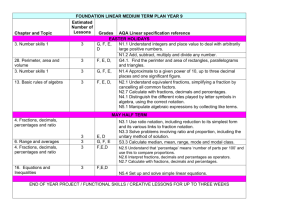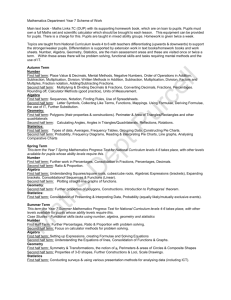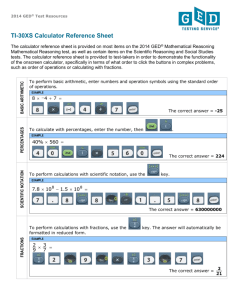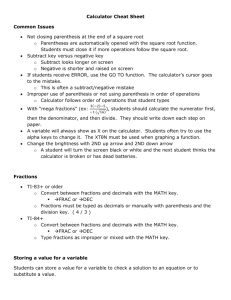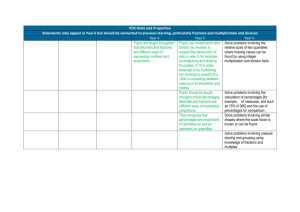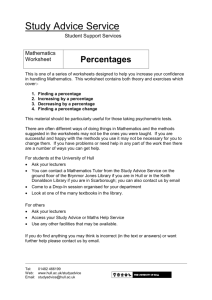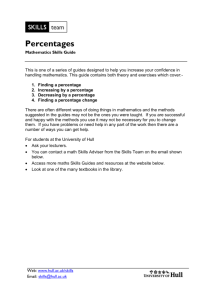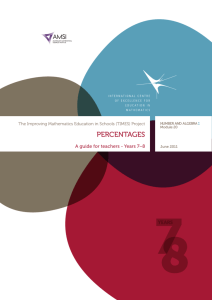Mathematics Lesson: Year 6 – Fractions decimals and percentages
advertisement
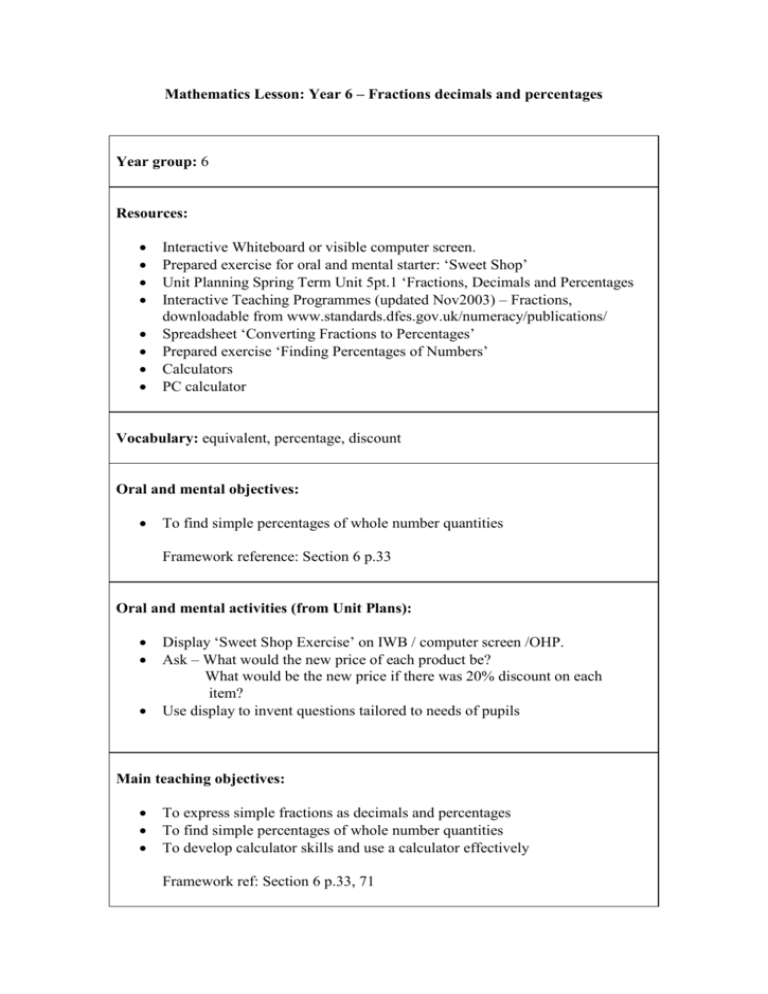
Mathematics Lesson: Year 6 – Fractions decimals and percentages Year group: 6 Resources: Interactive Whiteboard or visible computer screen. Prepared exercise for oral and mental starter: ‘Sweet Shop’ Unit Planning Spring Term Unit 5pt.1 ‘Fractions, Decimals and Percentages Interactive Teaching Programmes (updated Nov2003) – Fractions, downloadable from www.standards.dfes.gov.uk/numeracy/publications/ Spreadsheet ‘Converting Fractions to Percentages’ Prepared exercise ‘Finding Percentages of Numbers’ Calculators PC calculator Vocabulary: equivalent, percentage, discount Oral and mental objectives: To find simple percentages of whole number quantities Framework reference: Section 6 p.33 Oral and mental activities (from Unit Plans): Display ‘Sweet Shop Exercise’ on IWB / computer screen /OHP. Ask – What would the new price of each product be? What would be the new price if there was 20% discount on each item? Use display to invent questions tailored to needs of pupils Main teaching objectives: To express simple fractions as decimals and percentages To find simple percentages of whole number quantities To develop calculator skills and use a calculator effectively Framework ref: Section 6 p.33, 71 Main teaching activities: Display ITP ‘Fractions’ on whiteboard or computer screen Display three fraction lines showing equivalences between ¼, 0.25 and 25% Display 3 more fraction lines. Display ¾ on the first line. Invite pupils to suggest equivalent decimal fraction and percentage before revealing. Repeat for other simple fractions. Vary the type of fraction displayed first. Small group work: Using spreadsheet ‘Converting Fractions to Decimals’, have small groups using PCs to do conversion with possible TA help. Using PC Calculator, demonstrate how to find percentages using calculator. 300 x 35 % Remind pupils how to find estimate of percentage to check against their calculator answer. e.g. How can we find 6% of 300? 10% of 300 is 30 and 5% is 15 so 6% should be a bit more. Give other percentage examples for pupils to find on their calculators. Display ‘Finding the Percentage of Numbers’. The pupils have to choose a percentage from the first circle and a number from the second and work out the answer with a calculator or in their heads. Collect answers and discuss methods and estimates. Can anyone think of ways of doing questions mentally where a calculator has been used? Plenary: Write 420 on board. What percentages can pupils find in their heads. Record. Discuss methods used. For what percentages would we need to use a calculator?
